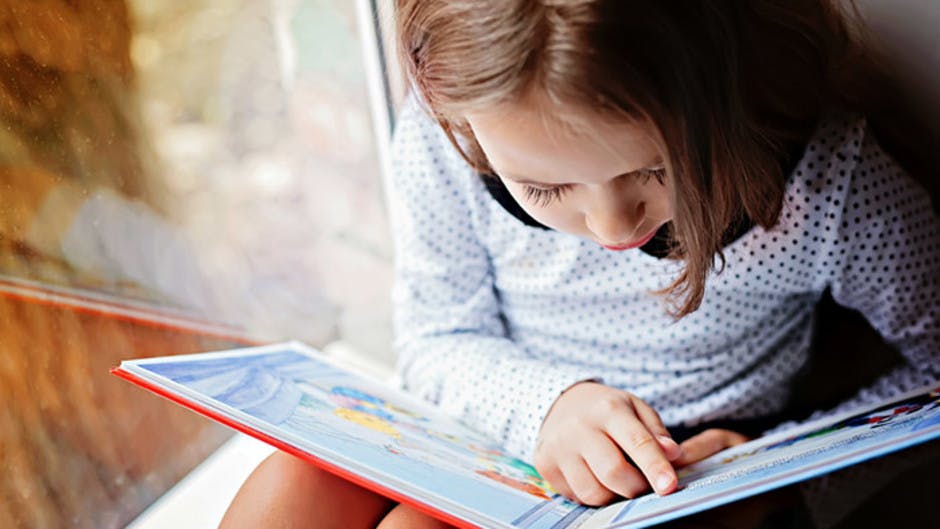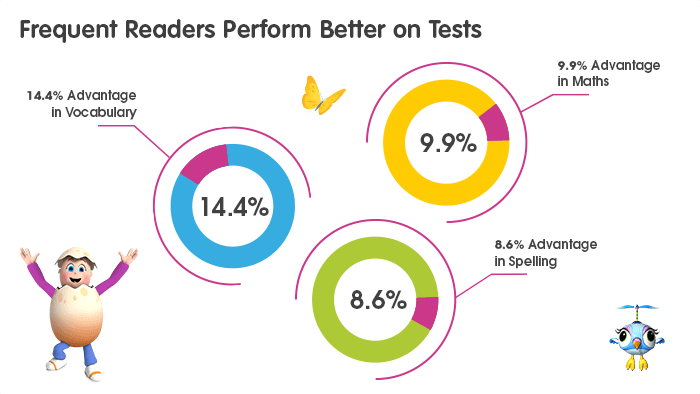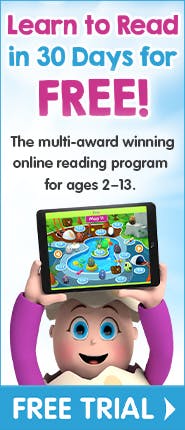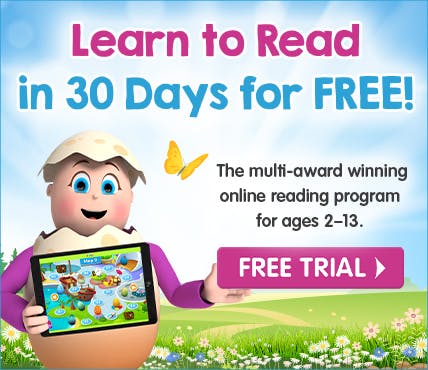


What Age Should a Child Read Fluently?

Some children learn to read at 4 or 5 years of age. But most will get the hang of it by age 6 or 7. Free trial
Learning to read fluently is one of the most challenging though rewarding skills a child will learn. It involves a number of skills and processes. These take time to develop as it means teaching the brain new functions.
Studies continue to show that children who learn to read at an early age enjoy a wealth of advantages. These include having more general knowledge, a larger vocabulary and even improved attention spans and focus.
Learning to read early also gives children a strong advantage in other academic areas later on, including science and mathematics. After all, reading lies at the heart of all formal education. The stronger your child's reading skills, the more able they are to comprehend the text they are reading.
A study of 6,000 children by the Institute of Education, London University found that children who had read often at the age of 10 and had read books and newspapers more than once a week at the age of 16 performed better on tests than children who read less.

Studies show that children who read frequently perform better on vocabulary, spelling and maths.
There was a 14.4% advantage in vocabulary, a 9.9% advantage in maths and an 8.6% advantage in spelling, the research found, once parents' background and reading habits were taken into account.
What age do most children learn to read?
Like many developmental milestones there are key stages, but children will vary in age when they learn to independently read. Some children learn to read at 4 or 5 years of age. But most will get the hang of it by age 6 or 7.
It's important to remember that all children learn at their own pace, and the key to reading success is to make it an enjoyable process. Encouraging an early interest in reading is one of the best ways to put your child on the right track. For example, the more enthusiasm you show when you read a book, the more your child will look forward to it. You can focus on making it a special bonding experience with an evening ritual and choose activities that build their reading confidence without feeling like a chore. Read our top tips for how to make reading fun at home.
Early Reading vs. Reading Fluency
While children may be able to decode the words they read on a page, this is still different to reading fluency. Reading fluency occurs when a child has developed the knowledge and skills to recognise words automatically, accurately and quickly. This usually develops at ages 7 to 8.
For a child who can read fluently, their brain is able to perform multiple tasks at the same time. These include decoding words, comprehending information, relating the information to existing knowledge of the subject matter, making inferences and judging the information's usefulness for the task at hand.
Reading ability is developed by combining all five components of reading (phonics, phonemic awareness, vocabulary, comprehension and fluency) via explicit instruction. But while explicit instruction is how children learn these skills, it all comes down to practice, practice, practice when it comes to creating the automaticity they need to become fluent readers.
Thankfully there's a lot parents can do to help children be in the best position when they are ready to learn how to read.
How to help your child learn to read early on
Research shows many key early reading skills develop from birth to age 5. It is essential to set up a strong foundation of language development, cultivated through lots of playful conversation, story time and read‑aloud sessions. Here are seven things you can do to help your child learn to read.
1. Context
Start with something children can relate to, such as their name. This helps them to learn letters and their corresponding sounds in context. Talk about the way the letters look, sound, and feel. Encourage your child to make the letters using play dough or magnetic letters etc. Show your child how each letter makes its own sound but when you put them all together they make your child's name.
2. Non-Alphabetical Order
Try to avoid starting from 'a' and working through every single letter in alphabetical order. Instead, aim to teach your child letters that can quickly combine to make real words. See if there are any little words you can make from just the letters of your child's name. In the first four lessons, the Reading Eggs program introduces the letters and sounds / m / / s / / a / / t /, which means children can soon read the words 'a', 'at', 'am' 'as' 'mat', 'sat', and 'Sam'.
3. Letters and Sounds
Start by introducing lowercase letters as these make up the majority of the print we read. Encourage your child to identify the focus letter and its sound in other texts and the environment around them. You can also have some fun making up mnemonics, actions, and images to help your child build instant recall. These activities help to develop phonemic awareness and the understanding that words are made up of letters and that every letter has a corresponding sound.
4. Blending
Once your child can recognise a handful of letters, it's time to start blending. This is done by sounding out each letter and then blending the word all the way through from the first letter to the last. Stick to simple CVC (consonant‑vowel‑consonant) words to start with. For example, / d / / o / / g / when blended together makes the word 'dog'.
5. Building Vocabulary
Help your child build their reading vocabulary. Introduce more letters, sounds and ultimately new words. Encourage your child to put their budding skills to work by reading simple texts and captions. The Reading Eggs program has over 4000 e‑books to help your child build their reading confidence. Start your free trial here.
6. Writing
As well as learning to break words into sounds for reading, it's a good idea to encourage your child to put sounds back together in order to spell words. This is called 'encoding' and works alongside the reading process. Try asking your child to have fun sound‑talking words, such as “Where is my b‑a‑g?” “This is my h‑a‑t.” Then ask them to write the words using magnetic letters, crayons, pencils, or paint.
7. Praise
Get excited by their achievements. Praise, reward and take their reading and writing seriously. Display their work on the walls or the fridge and let your child see that you value their efforts. Congratulate them as they continue on their incredible reading journey.
Ready to start your child's learning‑to‑read journey at home? Try Reading Eggs free for 30 days and see how their reading ability improves in just weeks. The highly engaging program is based on solid scientific research to cover all five components of reading, including phonics, phonemic awareness, vocabulary, comprehension and fluency.
Your child can also complete the reading placement test for free. This quiz assesses their reading ability and matches them to the perfect starting level in the program. It will also give you an idea of their estimated reading age, which will help you support their reading development at home by choosing the right books. Read more about choosing the perfect books for your child's ability.
And remember, it's normal and expected for children to develop their reading skills at different paces. If you're concerned about your child's reading development or if they're showing signs of struggling, talk to their doctor or teacher about whether early intervention could help.
Start your FREE 30‑day trial of Reading Eggs today!
Reading Eggs makes learning to read easy and fun with self‑paced online lessons, interactive activities and exciting rewards that motivate children of all reading abilities to improve their skills. Start your free trial of the multi‑award winning program today.






